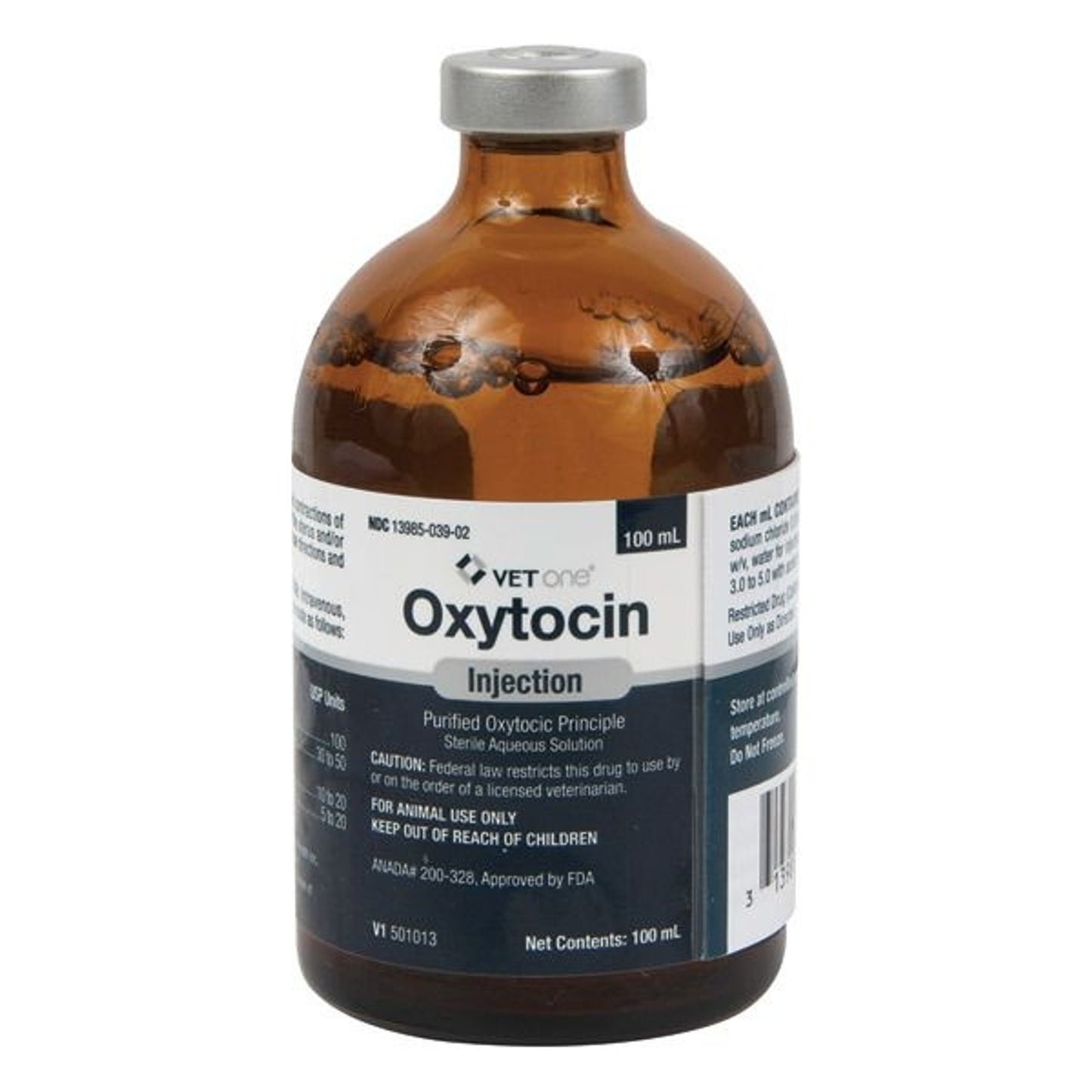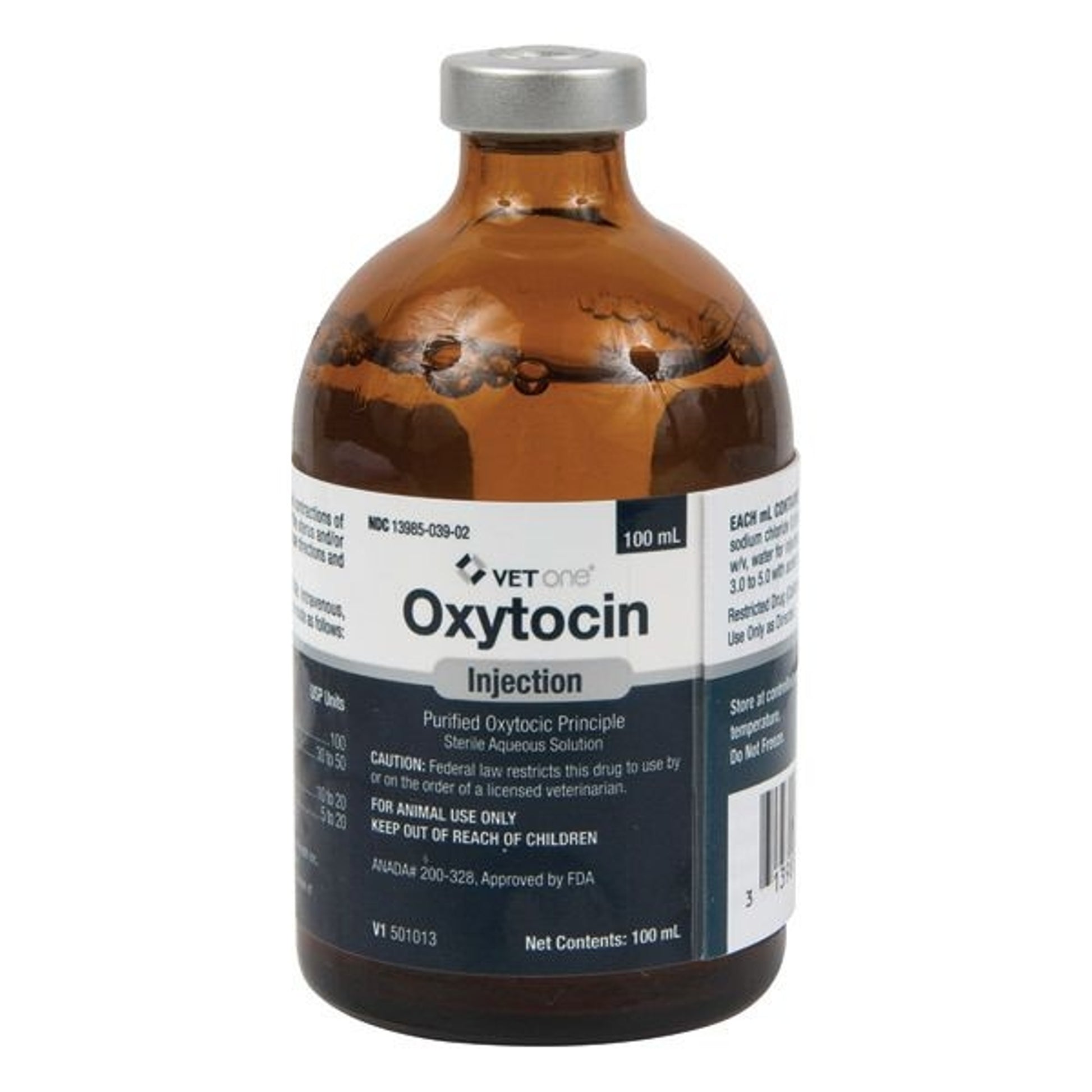Oxytocin
Oxytocin Injectable 100ml
Oxytocin Injectable 100ml
Couldn't load pickup availability
SKU:P01737
Oxytocin Injection is used to assist in giving birth in multiple species including dogs and cats. It is a prescription hormone used to increase uterine contractions, for milk letdown or for the treatment of egg binding in birds and reptiles.
Who is it for?
Oxytocin is for multiple species including dogs and cats.
What are the benefits?
| * | Prescription hormone for intravenous, intramuscular or subcutaneous injection |
| * | Oxytocin is used to stimulate uterine contractions in multiple species |
| * | Also aids in milk letdown in females with adequate milk production |
Oxytocin Injection is used to assist in the birthing process. It is used to stimulate contractions of the uterus and affects the mammary glands by increasing milk letdown. Oxytocin is a hormone naturally released by the hypothalamus section of the brain during labor to stimulate uterine contractions. This injectable form of the hormone, Oxytocin is FDA approved for use in veterinary medicine. It is approved for use in multiple animal species and is also used for the treatment of egg binding in birds and reptiles.
How does Oxytocin work?
Oxytocin acts on the smooth muscle in the uterus to increase uterine contractions.
Is there a generic equivalent available?
Oxytocin is a generic medication.
How is it given?
Oxytocin is given intravenously (IV), subcutaneously (SQ, subQ), or intramuscularly (IM), as directed by your veterinarian. Always follow the dosage instructions provided by your veterinarian. If you have difficulty giving the medication, contact your veterinarian. This medication should only be given to the pet for whom it was prescribed. It should only be given to animals with a dilated cervix and in whom the fetuses are in the correct position for birth.
What results can I expect?
Oxytocin will start to work within minutes of injection.
Injectable form only.
What should I discuss with my veterinarian while considering Oxytocin?
Talk to your veterinarian about what type of outcome is expected, and the risks of giving Oxytocin if the cervix is not dilated or the fetuses are not positioned correctly.
Have the veterinary staff show you how to correctly measure the dose and give the injection.
Notify your veterinarian of any other medications or supplements your pet is taking, and also if your pet has had any reactions to previous medications.
What is the most important information I should know?
Oxytocin is not for use in animals with dystocia (difficulty giving birth) due to malposition of the fetus, small pelvis in the mother, large fetal size, or when a cesarean section is otherwise warranted. Do not use until the cervix is naturally dilated.
Who should not take it?
Not for use in animals who are hypersensitive (allergic) to it. Not for use in animals with dystocia (difficulty giving birth) due to malposition of the fetus, small pelvis in the mother, large fetal size, or when a cesarean section is otherwise warranted. Do not use until the cervix is naturally dilated. If used when a pyometra (infection in the uterus) is present, it could cause the uterus to rupture. Do not use in animals with hypoglycemia (low blood sugar) or hypocalcemia (low blood calcium).
What side effects may be seen when taking Oxytocin?
May cause uterine cramping and discomfort. If used when the fetuses are malpositioned or too large for a natural birth, it may cause uterine rupture, fetal injury, or fetal death.
How is it stored?
Store at room temperature, according to the manufacturer's instructions. Keep out of reach of children and pets.
What should I do if I know of or suspect there has been an overdose?
If you know or suspect your pet has had an overdose, contact your veterinarian immediately.
What should I avoid when giving my pet Oxytocin?
Consult your veterinarian before using Oxytocin with any other medications, including vitamins and supplements, since interactions may occur. If used with adrenergic agents (e.g., ephedrine), it may cause postpartum high blood pressure. If used with some general anesthetics, it may cause low blood pressure and cardiovascular changes in the mother.
Model Numbers and UPCs
Model Numbers and UPCs
| Style | Item Number | UPC |
|---|---|---|
| One Size | P01737 | 899855600561 |
Share


